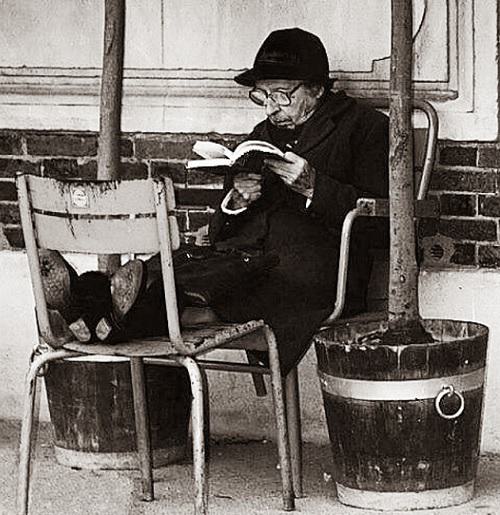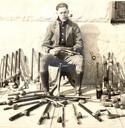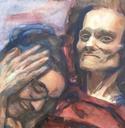At the end of the semester, as respite after many long weeks of studying important, yet often stale, ecclesial documents on sacred music, I always assign to my students Why Catholics Can’t Sing. It reads like a humorous essay, and with no dates or authoritative directives to memorize, it affords a fun end to the semester in the weeks leading up to the Christmas break.
I preface our study of Why Catholics Can’t Sing by telling my students, “Remember what this book is not: it is not a history book, and it is not a Church document. What’s more, it is not a theological work.” Reading it in the year 2020, however, made me re-think the last part of my caveat. I wonder if Why Catholics Can’t Sing, written by a musicologist, published in 1991 to much hullabaloo in the church music world, and updated in 2013, is really a deeply theological work—or at least a deeply spiritual one. Let me explain.
Why Catholics Can’t Sing (formerly subtitled in its first edition: The Culture of Catholicism and the Triumph of Bad Taste)was written by Thomas Day, a professor of musicology at Salve Regina University in Newport, Rhode Island. Dr. Day’s credentials—which he mentions in passing throughout the book—are impressive, including studies at Columbia University, work in Europe as a Fulbright scholar, and experience and training as a knowledgeable organist. Dr. Day is also a practicing Catholic, and so this book primarily comes from the viewpoint of a member of the Church who has observed, Sunday after Sunday, a strange combination of enthusiastic effort from leading parish musicians and blank-stared indifference from the people in the pews. Knowing the Church’s great treasury of music and the priority she has historically placed on the cultivation of art, Dr. Day has good reason to be puzzled by the musical predicament in parishes. German Catholics singverywell, he observes, and many Protestant churches boast congregations that can raise the roof off a place with the way they sing a hymn. Why, then, are so many Catholic congregations, particularly in the United States, so disengaged from musical worship?
Day’s answer to this question is multi-faceted, and though it is highly speculative, it reflects a great deal of clear-headed dot-connecting. Perhaps the most intriguing part of the book is Chapter 3, “The Irish Way—the Green Mainstream.” In this chapter, Day hypothesizes that mainstream American Catholicism found its liturgical identity primarily in the Irish Catholic mentality. This mentality is defined by a disdain for anything lengthy, florid, or demonstrative in the way either the priest or the people participate in Mass. This disdain was born from the centuries of persecution suffered by Catholics in Ireland at the hands of the English; for over two hundred years, while the bell towers and congregations of Anglican churches in Ireland would ring out in song, the persecuted Catholics would gather secretly for Mass without the luxuries of music or effulgent ceremony. This is the history that the Irish Catholics brought with them to the United States in the 19th and 20th centuries. Thus, the efficient worship of the Irish, involving no visible or audible signs of enthusiasm, became the “mainstream” mode of liturgical worship for American Catholics.
But Day does not stop there. He argues that the “real Irish music” of the mid-20th century shared the same aural ethos as the sweet and pious Catholic hymns of the time. According to Day, the feeling and fervor of “My Wild Irish Rose” moves on the same wavelength as moldy oldies such as “To Jesus’ Heart All Burning” and “Mother, at Your Feet Is Kneeling.” (I spent some time with my students diving into available YouTube recordings of Irish-American tunes and Catholic hymns of the same era. My opinion: Day is on to something.)
Day draws an even further connection, and I’m sure this is the one that provoked such ire in 1991: he likens the folksy Irish-American tunes and the saccharine Catholic hymnody of the mid-20th century to the music of the St. Louis Jesuits and the “folk”-inspired songs that are still with us today, mostly found in hymnals such as Gather and Glory & Praise. For instance, at one point, Day points out the striking musical similarities between “My Wild Irish Rose” and “Dwelling Place” by John Foley, SJ. (I checked on YouTube—Day is not wrong.)
For someone who regularly scratches his head when hearing songs like “Here I am Lord,” and “You Are Mine” in a Catholic parish and asks, “How exactly did we get here?,” Day provides a viable explanation that takes into account where the American Church has been for the past century and a half. No other Catholic or concerned musician has had the imagination, smarts, or guts to propose the kind of theory that Day has, and it’s worth buying the book to read Chapter 3 alone. In my opinion, it is what makes Why Catholics Can’t Sing a classic.
This time around, though, something else about Why Catholics Can’t Sing has struck me. During this reading, it became obvious to me that beneath his biting wit, musical expertise, and professorial knowledge, Thomas Day was troubled by a loss of the sense of the Faith, the mystery and presence, that used to make Catholic churches feel different from any other kind. And he is not timid about laying blame at the feet of individuals. In Chapter 6, he subtitles a passage, “The Experts Will Transform the Mob,” and explains that it was liturgical experts who set up the framework and plan for the full, conscious, and active participation of the faithful. The widespread expectations placed upon the faithful concerning their duty to sing (and enjoy it!) after the Second Vatican Council were not the result of a prayerful assessment of the engagement of the faithful in worship, but of the imposition of a vision held by the “elite,” those who were intent on shedding the Roman liturgy of its medieval “baggage.” What Day recognizes in these experts is a disdain for—and anger toward—the people in the pews. What makes them angry? The tendency for “the people” to become attached to the “liturgical clutter” of worship, like decorative excess, ancient language, glorious music—what we might also call, in its best instances, Beauty.
In other chapters, Day skewers the egoism and personality-centered worship that has seemed so prevalent at the Catholic Mass for the past fifty years. Chapter 5 is titled “Ego Renewal: Presenting Father Hank and Friends.” While Day slams the familiar and friendly manner of celebrating Mass that has crept into the arscelebrandiof many priests, he also criticizes the “I”-centered texts that have filled many modern hymnals and provides a list of what he sees as the worst offenders. His biggest pet peeve, seen throughout the book, is “Mr. Caruso,” the cantor who is more interested in supplying an abrasively amplified solo performance for the congregation than leading them in sung worship. What Day referred to as “bad taste” in the subtitle of the first edition might be more aptly dubbed “egoism.” Catholics—be they priests, musicians, or congregants in the pews—have lost a sense of reverence, awe, and the transcendent nature of the ritual of the Mass. Though Day’s primary focus is music, it is clear that he sees the musical crisis as part of a much bigger problem.
So, as a reviewer of this very good book, I maintain the first part of my initial caveat to my students: be aware that it is highly speculative. I do not agree with all of Day’s comments on the nature of the Church’s problems, and I think he would be the first to admit that in his writing of Why Catholics Can’t Sing, he delves into areas outside of his expertise. It is worth taking seriously, however, his concern for the deeper problems in the worship of the Church that have caused the crisis in Catholic sacred music. It is the concern of someone who has respect for the Catholic genius and who cannot fully fathom why we seem to have lost so much of it.
There is an awareness of a spiritual crisis rumbling beneath the wit and wisdom of Thomas Day in Why Catholics Can’t Sing. Lend your ears to his particular voice in the wilderness. You certainly will be the wiser, and you will have a whole lot of fun in getting there.
Dr. Mary Catherine Levri is the Director and Professor of Music at Mount St. Mary's Seminary and School of Theology in Cincinnati, OH. She received her D.M.A. from the University of Notre Dame in 2017, and is a 2008 graduate of the Pontifical John Paul II Institute for Studies in Marriage and Family.
Dr. Mary Catherine Levri is the Director and Professor of Music at Mount St. Mary's Seminary and School of Theology in Cincinnati, OH. She received her D.M.A. from the University of Notre Dame in 2017, and is a 2008 graduate of the Pontifical John Paul II Institute for Studies in Marriage and Family.



